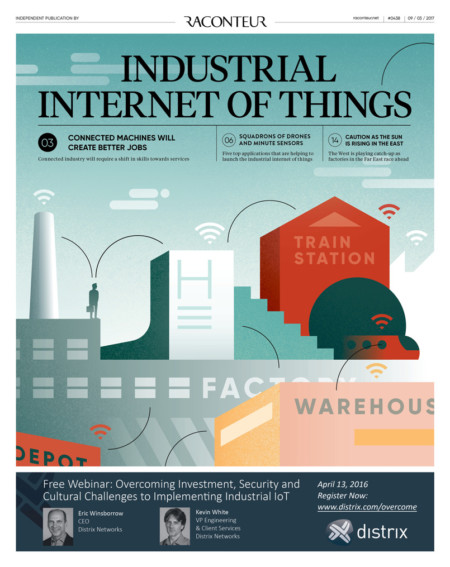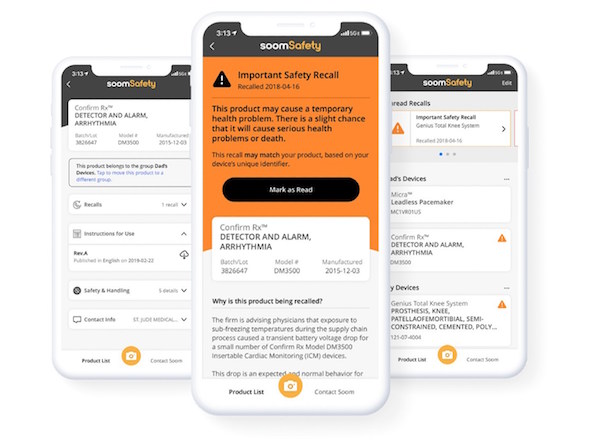implanted medical devices
See the following -
Connected Tech Is Just the Thing for the NHS
 Healthcare systems all over the world are struggling with two fundamental concerns – how to afford the rising cost of delivering care and how to integrate ever-changing new technologies? These twin challenges are intrinsically connected, for emerging technologies offer the promise of making care more affordable as well as more effective. The rewards for successful implementation will be significant, for patients as well as for those responsible for the sustainability of healthcare systems. In healthcare, the internet of things (IoT) is changing the way we think about looking after people. At the heart of this technological revolution is a focus on connectivity. Drug discovery and greater understanding of disease are critical.
Healthcare systems all over the world are struggling with two fundamental concerns – how to afford the rising cost of delivering care and how to integrate ever-changing new technologies? These twin challenges are intrinsically connected, for emerging technologies offer the promise of making care more affordable as well as more effective. The rewards for successful implementation will be significant, for patients as well as for those responsible for the sustainability of healthcare systems. In healthcare, the internet of things (IoT) is changing the way we think about looking after people. At the heart of this technological revolution is a focus on connectivity. Drug discovery and greater understanding of disease are critical.
- Login to post comments
Soom Launches Mobile App That Notifies Patients, Caregivers and Nurses of Medical Device Recalls
 Soom, a pioneer in utilizing barcode and knowledge graph technologies to bridge information gaps between data sources and physical products, has introduced SoomSafety, an iOS mobile app that allows users to scan a medical device and receive instructions for use, safety and recall information directly from the device manufacturer and U.S. Food and Drug Administration (FDA). "We built SoomSafety to help patients and caregivers relying on implanted medical devices and using medical devices at home answer one critical question, 'Is this medical device safe to use?'" said Charlie Kim, President and CEO of Soom. "Our technology makes it possible to connect previously siloed medical device data, giving patients-and their caregivers-more proactive control over their health and safety."
Soom, a pioneer in utilizing barcode and knowledge graph technologies to bridge information gaps between data sources and physical products, has introduced SoomSafety, an iOS mobile app that allows users to scan a medical device and receive instructions for use, safety and recall information directly from the device manufacturer and U.S. Food and Drug Administration (FDA). "We built SoomSafety to help patients and caregivers relying on implanted medical devices and using medical devices at home answer one critical question, 'Is this medical device safe to use?'" said Charlie Kim, President and CEO of Soom. "Our technology makes it possible to connect previously siloed medical device data, giving patients-and their caregivers-more proactive control over their health and safety."
- Login to post comments
The Ransomware Attacks on Hospitals Are (Cyber) Criminal
 One of the redeeming aspects of crises is that, amidst all the confusion, suffering, and loss, there are usually moments of grace, of humans showing their best nature... Unfortunately, crises also tend to bring out the worst of our natures... And then there are the cyberattacks. Last week the federal Cybersecurity & Infrastructure Security Agency, the FBI, and HHS issued a joint alert Ransomware Activity Targeting the Healthcare and Public Health Sector, warning that they have "credible information of an increased and imminent cybercrime threat to U.S. hospitals and healthcare providers." I'll spare you the technical details of the expected attack strategies or suggested mitigation efforts, but I will note that they warned: "CISA, FBI, and HHS do not recommend paying ransom." Read More »
One of the redeeming aspects of crises is that, amidst all the confusion, suffering, and loss, there are usually moments of grace, of humans showing their best nature... Unfortunately, crises also tend to bring out the worst of our natures... And then there are the cyberattacks. Last week the federal Cybersecurity & Infrastructure Security Agency, the FBI, and HHS issued a joint alert Ransomware Activity Targeting the Healthcare and Public Health Sector, warning that they have "credible information of an increased and imminent cybercrime threat to U.S. hospitals and healthcare providers." I'll spare you the technical details of the expected attack strategies or suggested mitigation efforts, but I will note that they warned: "CISA, FBI, and HHS do not recommend paying ransom." Read More »
- Login to post comments
Why Implanted Medical Devices Should Have Open Source Code
 As medical implants become more common, sophisticated and versatile, understanding the code that runs them is vital. A pacemaker or insulin-releasing implant can be lifesaving, but they are also vulnerable not just to malicious attacks, but also to faulty code. For commercial reasons, companies have been reluctant to open up their code to researchers. But with lives at stake, we need to be allowed to take a peek under the hood. Over the past few years several researchers have revealed lethal vulnerabilities in the code that runs some medical implants.
As medical implants become more common, sophisticated and versatile, understanding the code that runs them is vital. A pacemaker or insulin-releasing implant can be lifesaving, but they are also vulnerable not just to malicious attacks, but also to faulty code. For commercial reasons, companies have been reluctant to open up their code to researchers. But with lives at stake, we need to be allowed to take a peek under the hood. Over the past few years several researchers have revealed lethal vulnerabilities in the code that runs some medical implants.
- Login to post comments
Your Toaster May Be Bad For Your Health IT
 the cyberattack last week...shut down access to many major websites...What does this have to do with health care? Plenty, as it turns out. IoT devices are increasingly helping us manage our health and medical care. IoT in health care is expected to be a huge market -- perhaps 40% of the total IoT, and worth some $117b by 2020, according to McKinsey. Expected major uses include wearables, monitors, and implanted medical devices. The problem is that many manufacturers haven't necessarily prepared for cyberattacks. Kevin Fu, a professor at the University of Michigan's Archimedes Center for Medical Device Security, told CNBC: "the dirty little secret is that most manufacturers did not anticipate the cybersecurity risks when they were designing them [devices] a decade ago, so this is just scratching the surface."
the cyberattack last week...shut down access to many major websites...What does this have to do with health care? Plenty, as it turns out. IoT devices are increasingly helping us manage our health and medical care. IoT in health care is expected to be a huge market -- perhaps 40% of the total IoT, and worth some $117b by 2020, according to McKinsey. Expected major uses include wearables, monitors, and implanted medical devices. The problem is that many manufacturers haven't necessarily prepared for cyberattacks. Kevin Fu, a professor at the University of Michigan's Archimedes Center for Medical Device Security, told CNBC: "the dirty little secret is that most manufacturers did not anticipate the cybersecurity risks when they were designing them [devices] a decade ago, so this is just scratching the surface."
- Login to post comments